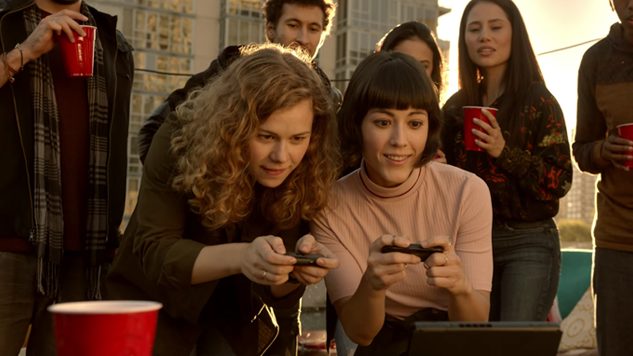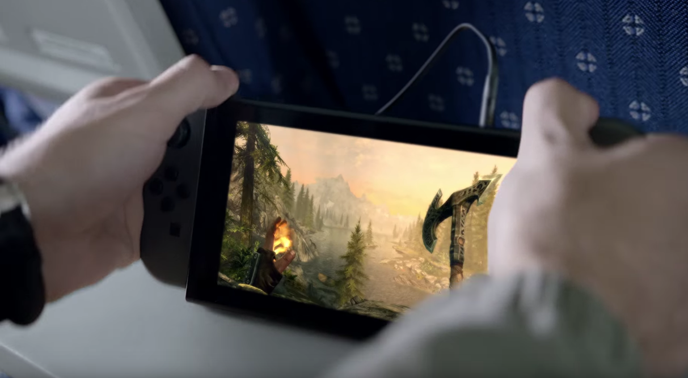Why The Switch Isn’t About To Kill Off the 3DS Any Time Soon

Nintendo’s history is riddled with corpses. To survive, whether as wild creature or publically traded company, one must be comfortable with the death of those around you. Sometimes, even your own creations must be sacrificed in order to move forward into the future.
The gaming industry has a complicated relationship with its past. While companies love to celebrate a franchise anniversary (see: Pokemon’s 20th last year, Dragon Quest’s 30th this year), this exuberance often hinges on the selling of a present-day product. And while a franchise can span multiple generations of players and products, a single platform often lives and dies in an abbreviated period of time. You can no longer buy a PlayStation 2 in a store, for instance. Gaming systems have expiration dates. Sometimes the market dictates the length of their stay on this earth, an unpopular offering forced into a fresh burial before its last natural breath. Virtual Boy, we hardly knew ye.
Other times, the platform holder pulls the plug out of necessity. In 2004, Nintendo released the DS, a dual-screened touch-enabled handheld that appeared to be a strange, underpowered novelty; their more traditional Game Boy Advance, an upgrade to the Game Boy line, was still thriving. When the DS began to surge in popularity, Nintendo was quick to stop producing GBA units and ceased development on GBA games. In 2005 and 2006, the only Nintendo-published titles were mostly Japan-only experiments like the bit generations series, a new risky IP in Rhythm Tengoku, and Mother 3, the Earthbound sequel the West still clamors for. The only other title released overseas was Mario Power Tennis. Like an extra fertilized egg absorbed into an inhabited womb, one’s life was cut short so that the other could live.
Enter the Nintendo Switch. By all accounts, its launch has been a major success, outselling all other Nintendo hardware’s first weekend of sales. Nintendo has upped their production based on strong demand; they anticipate manufacturing and shipping over 16 million units before next March. Their previous home console, the Wii U, only managed to sell 13 million over four years. Nintendo needn’t bury the latter to accommodate the former; we poured the dirt over the Wii U just fine with our apathy and lack of interest.
But the Nintendo 3DS is another story. There are surface-level similarities to their throttling of the GBA. Last summer, the 3DS saw Rhythm Heaven Megamix release and just this month brought Mario Sports Superstars. The end-of-lifecycle plan seemed to be in action. But whereas a decade ago, the DS sopped up any and all new titles with to-be-blockbusters like Nintendogs and Brain Age, new 3DS titles are still coming out this year. And with the strength of last fall’s Pokemon Sun and Moon, the system had its strongest sales quarter since its first year on the market. Our little clamshell wonder ain’t pushing up daisies yet.
The question is: Can it survive in a landscape alongside another Nintendo system you can take anywhere? Nintendo hopes the answer to that is a resounding “Yes.” And there’s a few specific reasons why.
When the Nintendo DS launched, it brought a brand new form factor and input device. But it also included a small slot to insert your GBA games. Nintendo could afford to stop selling GBAs because their next device still played the 1000+ titles released for its predecessor. The Switch has no backwards compatibility with any past system. The 3DS has its own unique library that can not be easily replaced with the year-one output of a young system.
The 3DS also represents an entirely different market than Nintendo’s next “home” console, the Switch, even if both are portable. A New Nintendo 3DS is around $100; the kid-friendly 2DS is even cheaper at $79.99. Both come with a game and include software like AR-shooter Face Raiders and the ability to take 3D photos. The Switch will run you $300 and doesn’t include any games. That is a purchase an adult can rationalize. But the thousands of children that turned seven-years-old yesterday are more likely to get their parents to nab a sub-$100 system, especially one with hundreds of games.
Nintendo is fond of talking up the viability of their systems— until they’re no longer viable. But with over 60 million units worldwide, the 3DS is still capable of bearing fruit. Indeed, Nintendo refers to this time as “Harvest,” when enough systems exist that they can finally maximize the potential of their evergreen software line-up. In the fall, they re-released an updated version of mega-hit Animal Crossing: New Leaf with amiibo support. A new Monster Hunter title just came out in Japan, selling over a million copies in its first weeks. Nintendo recently announced a special edition of Fire Emblem Echoes launching this spring. Action-RPG Ever Oasis is coming soon. Pikmin has been reimagined as a 2D puzzle-platformer. Popular titles are being reprinted under the “Nintendo Selects” banner, a low-cost reissue of million-sellers that now includes Kirby Triple Deluxe and Mario & Luigi: Dream Team.
And there’s more to come. President of Nintendo of America, Reggie Fils-Aime, promises this year’s E3 will not only trumpet the future of Switch but, somewhat surprisingly, the 3DS as well. There’s surprises yet to be revealed. None of this sounds like a “Do Not Resuscitate” order to me.
The 3DS is also the remaining pillar for Nintendo’s pre-Switch social experiments like Miiverse and StreetPass. The Switch, for all its portability, is not built to passively engage with scores of other users like the 3DS can. There’s still 60 million systems worth of puzzle pieces and Find Mii warriors to spread around. The Switch also does not have an internet browser (the 3DS does—with 3D YouTube support), nor does it have a bespoke social network where players can draw pictures, ask for game hints, and comment about water graphics. There may well be a time when Nintendo fleshes out the skeletal frame and turns the Switch into a full-blown media device. But for now it’s less a tablet than it is a widescreen Game Boy. And that’s enough.
Over time, the 3DS has slowly evolved from a dedicated game device to a more flexible machine that’s happy to take cues from smartphones. Dozens of titles depend on small incremental purchases: free downloads like Rusty’s Real Deal Baseball and Steel Diver: Sub Wars, free-to-play apps like Pokemon Picross, not to mention the fiendish and wonderful Nintendo Badge Arcade which turns your system into a parlor crane game complete with digital metallic pins to adorn your Home Menu. The Switch… has full-blown games at $60 and $50, and digital indie titles for less. The soil there is not yet fertile.
Nor is the ground beneath the 3DS ready to be dug into a six-foot-deep trough. The robust handheld is in no danger of being suffocated by the Switch’s massive appeal. Even if at first glance they appear to offer the same thing (Nintendo games on the go), the 3DS is a vastly different proposition, and one that Nintendo would be loathe to see sink into the earth before its time. The Switch is no 3DS-replacement. Nintendo’s quirky 3D portable won’t die, or be killed, anytime soon.
Since 2003, Jon Irwin has been paid to write about film, techno, ice cream, wine, golf, drag-racing, French children and videogames. His first book, Super Mario Bros. 2, was published last year by Boss Fight Books. Follow along: @WinWinIrwin.


